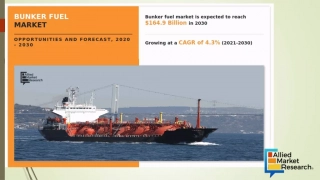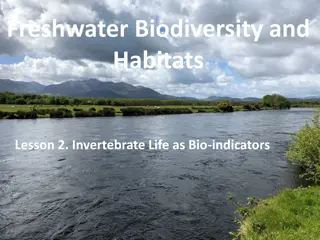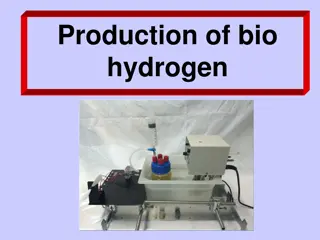Bio-LNG Market
The global bio-LNG market was valued at $0.7 billion in 2022, and is projected to reach $3.4 billion by 2032, growing at a CAGR of 17.9% from 2023 to 2032.
Uploaded on Jan 29, 2024 | 3 Views
Download Presentation

Please find below an Image/Link to download the presentation.
The content on the website is provided AS IS for your information and personal use only. It may not be sold, licensed, or shared on other websites without obtaining consent from the author.If you encounter any issues during the download, it is possible that the publisher has removed the file from their server.
You are allowed to download the files provided on this website for personal or commercial use, subject to the condition that they are used lawfully. All files are the property of their respective owners.
The content on the website is provided AS IS for your information and personal use only. It may not be sold, licensed, or shared on other websites without obtaining consent from the author.
E N D
Presentation Transcript
Introduction The bio-LNG market was valued at $0.7 billion in 2022, and is estimated to reach $3.4 billion by 2032, growing at a CAGR of 17.9% from 2023 to 2032. A sustainable and renewable kind of liquefied natural gas (LNG), bio-LNG is produced from biomass sources. As part of the biomass feedstock collection step in the manufacture of bio-LNG, organic resources are first gathered. Animal manure, sewage sludge, food waste, and energy crops are among the organic wastes used as biomass feedstock. When biomass feedstock is treated to anaerobic digestion in the absence of oxygen, microorganisms break down organic material. Methane and carbon dioxide make up the majority of the biogas produced by the process. The resultant biogas is subsequently processed to remove impurities and CO2. It causes a methane concentration increase of more than 90% to equal natural gas quality, depending on the intended usage. Download PDF Sample
The biogas is cooled to extremely low temperatures, frequently below -160C (- 256 F), in order to purify the methane present. During the purification process, methane in biogas is refrigerated to extremely low temperatures, frequently below - 160 C (-256 F). Bio-LNG is made by converting a gas into a liquid. Numerous uses of bio-LNG exist, including the production of energy and heating. It's also used to power ships, buses, and other kinds of transportation. Bio-LNG can be utilized independently or in conjunction with conventional LNG. It is a more environmentally friendly and cleaner alternative to conventional LNG derived from fossil fuels. The environmental benefits of bio-LNG include lower greenhouse gas emissions and the encouragement of organic waste management for energy production. As a result, the economy becomes more sustainable and circular. Download PDF Sample
Key Findings Of The Study: By source, the household waste segment is projected to grow at the highest CAGR of approximately 18.2%, in terms of during the bio-LNG market forecast period. By application, the automotive segment dominated the bio-LNG market share growing at a CAGR of 18.3% in 2021. By region, Europe dominated the bio-LNG market and is expected to grow at a high CAGR during the forecast period. Download PDF Sample
The key players profiled in the report include: Linde plc Nordsol Flogas Britain Ltd. EnviTec Biogas AG Biokraft International AB TotalEnergies SE Titan LNG DBG Group B.V. Download PDF Sample
Thank You! For More Details Visit us at https://www.alliedmarketresearch.com



































